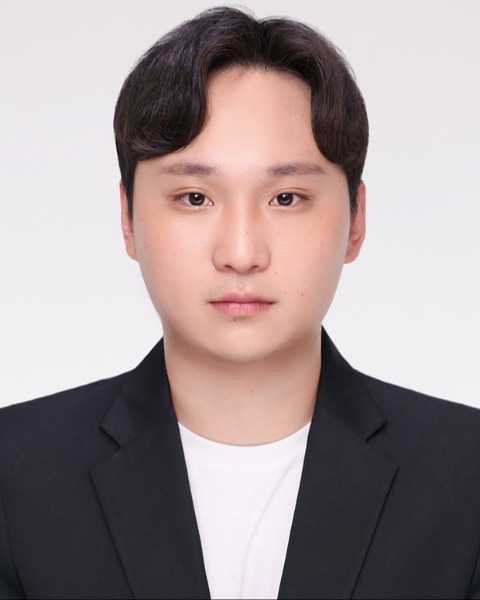Biomaterials
(A-33) Micro-textured silicone-based implant fabrication using electrospun fibers as a sacrificial template to suppress fibrous capsule formation
Friday, October 13, 2023
9:30 AM - 10:30 AM PDT
Location: Exhibit Hall - Row A - Poster # 33
- JC
Juhwan Choi, PhD candidate
Student
Yonsei University
Seoul, United States 
Jeongwoo Ham, PhD candidate
Student
Yonsei University
Seoul, United States- WK
Won-gun Koh
Professor
Yonsei University, United States
Presenting Author(s)
Last Author(s)
Co-Author(s)
Introduction:: As breast augmentation is the largest part of plastic surgery in the world, the study of capsular contracture which is the most frequent side effect of silicone implants becomes important. Capsular contracture is caused by excessive fibrosis to the periphery of the implant. So surface modification has been studied for controlling cellular behavior. In this study, micro-textures of different shape such as align or random nano-patterns were fabricated on PDMS surface to find out ideal surface modification to reduce capsular contracture.
Materials and Methods:: Sylgard® 184 PDMS elastomer base and curing agent purchased from Dow Corning (Midland, MI, USA) were used for manufacturing silicone implants and Poly(vinylpyrrolidone) (PVP, Mw ~1,300,000) were used to fabricate nanofibers. Micro-textured PDMSs were fabricated by modified-imprinting technique and PVP nanofiber was manufactured by electrospinning technique. In vitro, experiments were conducted with fibroblast and macrophage cells that play a major role in foreign body reaction (FBR). In vivo, the degree of capsular contracture inhibition was analyzed by subcutaneous transplantation in rats.
Results, Conclusions, and Discussions:: Differences in the tendency of fibrobalst and macrophage cells to grow in micro-textured surface modified silicone implants compared to smooth surface silicone implants were confirmed through morphology analysis. In addition, after transplantation into rats, differences in the expression levels of inflammatory and non-inflammatory factors were analyzed through Western blot, and as a result, the expression level of inflammatory factors in the micro-textured PDMS was lower than that of the bare PDMS. Finally, as a result of analyzing the capsule thickness and collagen density, the micro-textured PDMS showed lower capsule thickness and lower collagen density than bare PDMS. In this study, in vitro experiments have confirmed that micro-texture inhibits cell aggregation and differentiation by cell signaling, so micro-texture for surface modification method is expected to suppress capsular contracture. In particular, aligned shape pattern showed the best positive result, suggesting that the presence of sub-micron scale pattern domains is effective in suppressing FBR and, consequently, minimizing the capsular contracture. Although much research is required to elucidate the mechanism of suppression of FBR, it is suggested that only the physical surface modification of micro-texture can make a great contribution to effectively suppressing FBR.
Acknowledgements (Optional): : This research was supported by a grant from the Korea Health Technology R&D Project through the Korea Health Industry Development Institute (KHIDI), funded by the Ministry of Health & Welfare, Republic of Korea (grant number: HI15C1744)
References (Optional): : [1] B.Y. Yoo, B.H. Kim, J.S. Lee, B.H. Shin, H. Kwon, W.G. Koh, C.Y. Heo, Dual surface modification of PDMS-based silicone implants to suppress capsular contracture, Acta Biomaterialia 76 (2018) 56-70.
[2] J.S. Lee, B.H. Shin, B.Y. Yoo, S.Y. N, M. Lee, J. Choi, H. Park, Y.B. Choy, C.Y. Heo, W.G. Koh, Modulation of Foreign Body Reaction against PDMS Implant by Grafting Topographically Different Poly(acrylicacid) Micropatterns, Macromolecular Bioscience 19(12) (2019) 1900206-12.
Materials and Methods:: Sylgard® 184 PDMS elastomer base and curing agent purchased from Dow Corning (Midland, MI, USA) were used for manufacturing silicone implants and Poly(vinylpyrrolidone) (PVP, Mw ~1,300,000) were used to fabricate nanofibers. Micro-textured PDMSs were fabricated by modified-imprinting technique and PVP nanofiber was manufactured by electrospinning technique. In vitro, experiments were conducted with fibroblast and macrophage cells that play a major role in foreign body reaction (FBR). In vivo, the degree of capsular contracture inhibition was analyzed by subcutaneous transplantation in rats.
Results, Conclusions, and Discussions:: Differences in the tendency of fibrobalst and macrophage cells to grow in micro-textured surface modified silicone implants compared to smooth surface silicone implants were confirmed through morphology analysis. In addition, after transplantation into rats, differences in the expression levels of inflammatory and non-inflammatory factors were analyzed through Western blot, and as a result, the expression level of inflammatory factors in the micro-textured PDMS was lower than that of the bare PDMS. Finally, as a result of analyzing the capsule thickness and collagen density, the micro-textured PDMS showed lower capsule thickness and lower collagen density than bare PDMS. In this study, in vitro experiments have confirmed that micro-texture inhibits cell aggregation and differentiation by cell signaling, so micro-texture for surface modification method is expected to suppress capsular contracture. In particular, aligned shape pattern showed the best positive result, suggesting that the presence of sub-micron scale pattern domains is effective in suppressing FBR and, consequently, minimizing the capsular contracture. Although much research is required to elucidate the mechanism of suppression of FBR, it is suggested that only the physical surface modification of micro-texture can make a great contribution to effectively suppressing FBR.
Acknowledgements (Optional): : This research was supported by a grant from the Korea Health Technology R&D Project through the Korea Health Industry Development Institute (KHIDI), funded by the Ministry of Health & Welfare, Republic of Korea (grant number: HI15C1744)
References (Optional): : [1] B.Y. Yoo, B.H. Kim, J.S. Lee, B.H. Shin, H. Kwon, W.G. Koh, C.Y. Heo, Dual surface modification of PDMS-based silicone implants to suppress capsular contracture, Acta Biomaterialia 76 (2018) 56-70.
[2] J.S. Lee, B.H. Shin, B.Y. Yoo, S.Y. N, M. Lee, J. Choi, H. Park, Y.B. Choy, C.Y. Heo, W.G. Koh, Modulation of Foreign Body Reaction against PDMS Implant by Grafting Topographically Different Poly(acrylicacid) Micropatterns, Macromolecular Bioscience 19(12) (2019) 1900206-12.
